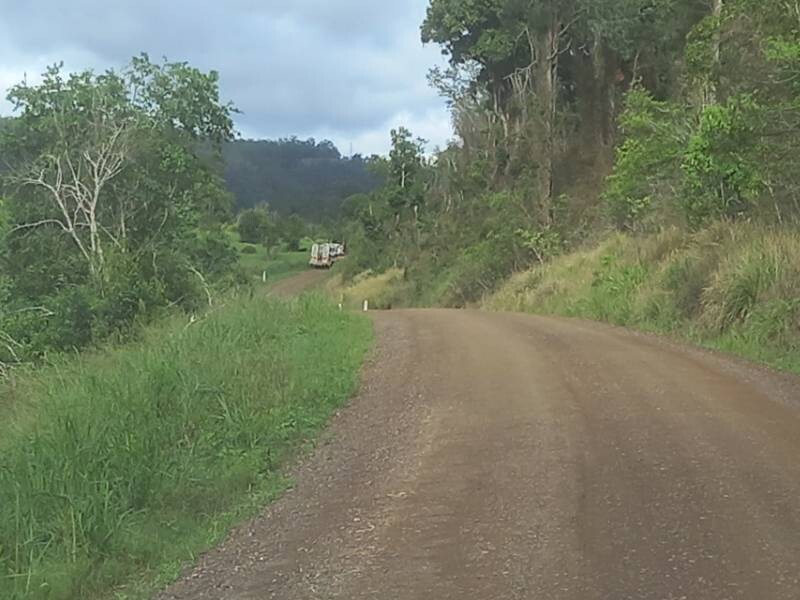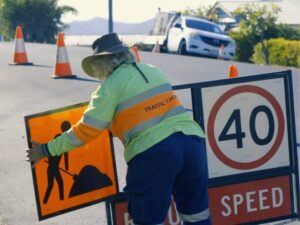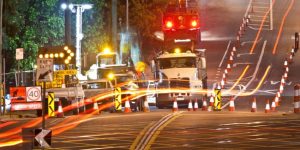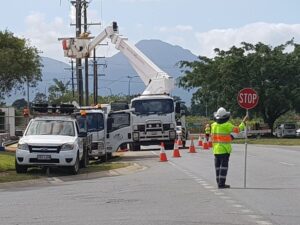Managing traffic in a regional town isn’t the same as managing traffic in a metro construction zone. Out in the bush, on winding backroads or narrow rural corridors, the conditions are different — and the risks are higher.
At East Coast Traffic Control, we’ve spent decades working on the kinds of roads most city-based crews never see. One-lane bridges, steep embankments, blind corners, paddock entries, creek crossings — this is where the work happens. And it’s why we treat rural and regional traffic management as a specialist skill.
Here’s what makes these jobs different, and how our team plans and delivers safe, compliant setups in even the trickiest conditions.
Narrow shoulders and nowhere to stand
In rural areas, the shoulder often disappears into a ditch, culvert or embankment. That leaves very little room for signage, traffic controllers or passing vehicles. In many cases, there’s not even space for two cars to safely pull over.
To manage this, our crews:
-
Use precise sign placement with extended advance warning
-
Reduce speed early to minimise risk around pinch points
-
Use portable traffic signals or PTCDs to control single-lane flows
-
Set up barrier tapers to protect workers in tight corridors
We’re always assessing the safest position for people, plant and pedestrians — even when the road seems quiet.
High-speed zones meet blind curves
Rural roads might be quieter, but they’re often signed at 80 or 100 km/h. Combine that with blind bends or hill crests and you’ve got a serious hazard if traffic isn’t slowed and controlled correctly.
That’s why we’re careful to use:
-
Early warning signs placed well before the curve
-
Additional speed signage or temporary speed reductions
-
Spotters or radio communication when visibility is limited
-
Extended taper lengths and advanced sign spacing for awareness
These measures reduce the chance of drivers arriving at the site too fast, or too late to react safely.
Farm access, oversized vehicles and school buses
Regional roads aren’t just for cars. Our crews often need to manage sites where tractors, oversized loads, buses and even livestock trailers are part of the flow. It’s not unusual to get called up mid-shift to clear a cattle truck or adjust signage for an extra-wide vehicle.
We build flexibility into every rural setup and ensure that supervisors can adjust spacing or control flow to allow priority vehicles through when needed.
Lack of phone reception or digital comms
A common challenge in rural areas is the lack of mobile coverage. That means no real-time updates, no easy calls to base, and sometimes no GPS.
To work around this, our team:
-
Plans comms in advance using UHF radios or site-specific channels
-
Trains crew in manual hand signals and backup processes
-
Deploys experienced TMIs who are comfortable making confident site decisions
Wherever possible, we confirm reception during the prestart and plan alternative ways to stay in contact.
Dust, storms and sudden weather shifts
The weather can change fast in the country. One minute it’s clear, the next you’re dealing with strong winds, dust storms or heavy rain — especially around open farmland or hills.
We account for this by:
-
Using heavy-base signage and weighted cones
-
Regularly checking stability of VMS trailers and arrow boards
-
Adjusting visibility protocols when dust or rain impacts signage
-
Allowing extra time in the job schedule for safe responses to changing weather
Safety doesn’t stop when the weather turns. It just means working smarter.
Locals know their roads — and don’t expect them to change
One challenge in remote areas is that locals often know the road like the back of their hand. They don’t expect it to be different. This can lead to driver confusion or frustration if signage isn’t clear or feels out of place.
That’s why we work hard to communicate clearly. We use:
-
VMS boards ahead of time when projects are scheduled
-
Local knowledge to predict driver behaviour and risky turns
-
Clear detours with no ambiguity — especially for out-of-towners or truck routes
-
Crew members who can talk to residents calmly and respectfully
Respecting the community and anticipating their movements helps us avoid near-misses and ensure smooth traffic flow.
Fatigue and crew rotation on remote jobs
Rural jobs often involve longer drives, isolation, and less immediate support if something goes wrong. That’s why our team pays close attention to fatigue management, shift lengths, and crew rotation.
We also try to roster locals first — people who know the roads, live nearby and don’t have a two-hour commute before they even clock in.
It’s quiet — until it isn’t
Working on country roads means you might see one car in 30 minutes — and then five cars, a semi and a school bus all at once. That unpredictability means we have to be switched on at all times.
Our crew members are trained to:
-
Stay alert even when traffic is low
-
Keep radios active and comms clear
-
Maintain signage and tapers properly throughout the day
-
Report changing conditions immediately so the plan can adjust
Because safety isn’t just about what’s happening now — it’s about being ready for what’s coming next.
FAQs
Are rural roads more dangerous to work on?
They can be. Higher speeds, tighter corridors and lower visibility make rural traffic control uniquely challenging. That’s why experienced crews and proper planning are essential.
How do you manage traffic where there’s only one lane?
We use portable traffic signals, stop/slow methods or remote-controlled devices depending on the risk and road width.
What if there’s no mobile reception?
We use UHF radios and manual protocols. Our crews are trained to work safely and stay connected without relying on mobile coverage.
Do you need special equipment for country jobs?
Yes. We often use additional signage, larger tapers and heavier bases to deal with wind, dust and tight margins.
Why choose ECTC for regional work?
Because we’ve done it before, and we take it seriously. From Grafton to Dalby, our crews know how to keep people safe on the toughest rural jobs.





